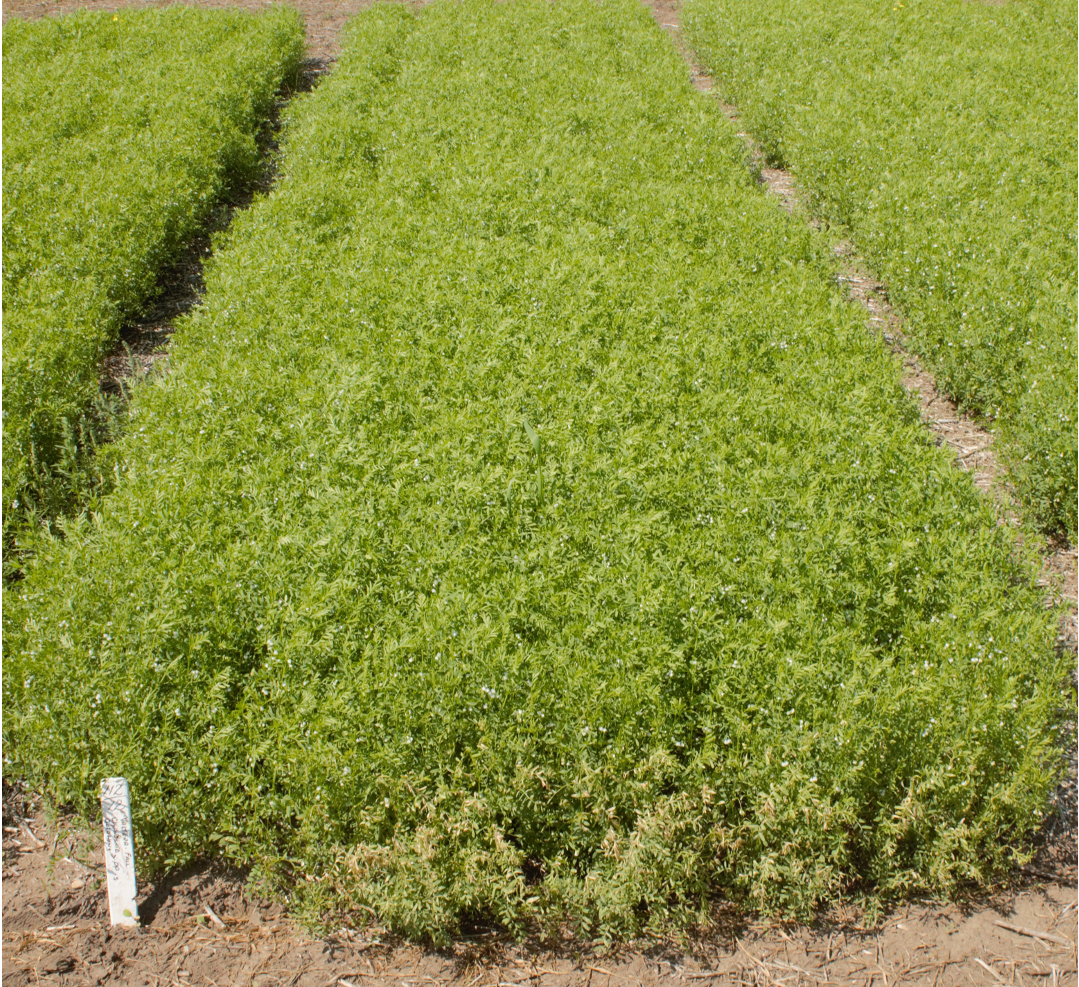An important part of spring seeding is ensure that any in-field weeds are considered and controlled before you break ground. Pre-emergent and pre-seed burndown can help your pulse crops better establish themselves and have better emergence rates if they are not competing with weeds. Pulses are poor competitors with weeds in general, so starting your weed management early in the season ensure greater success for your pulse crops.
There is a critical weed control window with pulses that should be taken into consideration when preparing your crop. This is defined as the growth stages in the crop that must be kept weed free to prevent yield loss. The critical period is based on yield loss due to weed interference of no more than 5%. In other words, the crop has to be weed-free during these stages to prevent a yield loss of more than 5%. The critical weed free period looks different for each crop:
- Peas – the critical weed free period for this crop is one to two weeks after pea emergence
- Lentils – when lentils are at the 5-node stage up to the 10-node stage, this is their critical weed free period
- Faba Beans – faba beans are poor competitors with weeds, especially during seeding, so applying post-emergent herbicides at the earliest crop stage listed on the herbicide label is recommended
- Chickpeas – chickpeas are also poor competitors with weeds, especially if weeds appear early. Herbicides are recommended to be applied early in the crop stages to improve weed control and reduce herbicide injury
- Soybeans – the critical weed free period for soybeans lasts from emergence to the second or third trifoliate leaf stages (V2-V3)
- Dry Beans – dry beans are not competitive at all against weeds. The critical weed free period for dry bean production is recognized at 20- 42 days after planting
Also ensure that you are using the correct products to help with your pre-seed and pre-emergence weed control. There are some helpful fact sheets that list the proper pre-seed and pre-emergent weed control for all pulse crops. Soil residual products can help to keep your fields clean in the early part of the growing season to enhance your in-crop weed control.
Kochia and wild mustard are both problematic weeds for Saskatchewan pulse producers and they have demonstrated increasing herbicide resistance across the province. Kochia grows early in the spring, develops quickly, and is a prolific seed producer. Kochia is much easier to manage in the early spring, when the weed is small. Wild mustard has competitive early season growth, high seed production, and long seedbank dormancy. Herbicides are an important tool to manage wild mustard, but only if they’re maintained as part of an integrated weed management plan that incorporates cultural, mechanical, and biological control. Refer to the Kochia in Pulse Crops and Wild Mustard in Pulse Crops fact sheets for more information.
When considering burnoff options for weed control, it is good to do a tank mix with glyphosate to help control volunteer canola and also as part of good herbicide resistance management. Refer to herbicide resistance fact sheets for more information on what to use on your pulse crops. Saskatchewan Ministry of Agriculture also has a comprehensive section on weed control in the 2020 Guide to Crop Protection.

Source: Nutrien Ag Solutions




